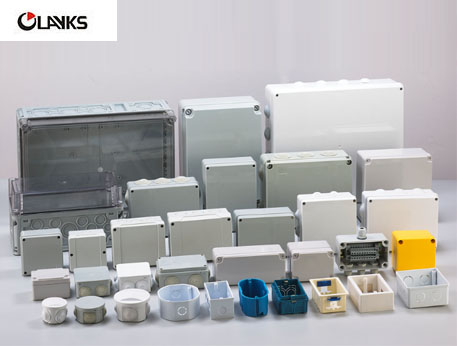What are Waterproof Junction Boxes?
Waterproof junction boxes are protective enclosures designed to house electrical connections and components, shielding them from moisture, dust, and other environmental factors. These boxes are essential for maintaining electrical safety and system reliability in both indoor and outdoor applications.

Industrial-grade waterproof junction box protecting electrical connections
Constructed from durable materials like polycarbonate, stainless steel, or fiberglass, these enclosures feature specialized gaskets and sealing mechanisms that prevent water ingress. They are rated using IP (Ingress Protection) codes, with higher numbers indicating better protection against elements.
Key Features & Benefits
Modern waterproof junction boxes offer numerous advantages for electrical installations in challenging environments:
-
Superior Protection: IP65, IP66, IP67, or higher ratings ensure protection against water, dust, and corrosion
-
Durable Construction: Made from materials resistant to UV radiation, chemicals, and extreme temperatures
-
Safety Compliance: Meet international electrical safety standards for various applications
-
Flexible Configurations: Multiple entry points with cable glands for different wiring setups
-
Longevity: Extend the life of electrical connections by protecting them from environmental damage

Close-up view of waterproof sealing and cable entry points
Applications & Use Cases
Waterproof junction boxes are utilized across numerous industries and settings where electrical connections need protection from moisture and environmental factors:
Outdoor Lighting
Protecting connections for garden, security, and street lighting systems
Marine Environments
On boats, docks, and coastal installations where saltwater exposure is a concern
Industrial Facilities
In manufacturing plants with high humidity or washdown requirements
Solar Power Systems
Protecting connections in solar panel arrays and renewable energy installations

Waterproof junction box used in a solar panel installation
Installation Guide
Proper installation is crucial for ensuring the waterproof integrity of junction boxes. Follow these steps for a secure installation:
-
Select the Right Location: Choose a location that minimizes exposure to direct water streams while allowing accessibility for maintenance.
-
Prepare the Surface: Ensure the mounting surface is clean, flat, and stable to accommodate the junction box.
-
Plan Cable Entry: Mark and drill entry points for cables, ensuring they align with the box's pre-molded entries or using appropriate cable glands.
-
Mount the Box: Secure the box using appropriate fasteners for the surface material (brick, wood, metal, etc.).
-
Make Connections: Route cables through glands, make electrical connections following proper wiring practices, and ensure all connections are secure.
-
Seal the Box: Before closing, ensure the gasket is clean and properly positioned. Tighten all fasteners evenly to maintain uniform pressure on the seal.
-
Test the Installation: Once installed, verify waterproof integrity with appropriate testing methods for your application.

Proper installation technique for waterproof junction box
Maintenance Tips
Regular maintenance ensures the long-term performance and reliability of waterproof junction boxes:
-
Inspect seals and gaskets periodically for signs of wear, cracking, or deterioration
-
Check for any visible damage to the enclosure such as cracks, fractures, or UV degradation
-
Verify that cable glands are properly tightened and maintaining their seal
-
Clean the exterior with appropriate cleaners that won't damage the enclosure material
-
Ensure mounting hardware remains secure, especially in environments with vibration
-
During routine maintenance, inspect internal components for signs of moisture intrusion

Regular inspection and maintenance ensures long-term reliability
Choosing the Right Waterproof Junction Box
Selecting the appropriate junction box for your application involves considering several factors:
-
IP Rating: Match the IP rating to your environmental conditions (IP65 for water jets, IP67 for temporary immersion, etc.)
-
Material: Choose materials based on chemical exposure, UV resistance, and temperature requirements
-
Size: Ensure adequate space for connections while considering mounting constraints
-
Entry Points: Select the number and type of cable entries needed for your installation
-
Certifications: Look for relevant certifications for your industry or application (UL, CE, ATEX, etc.)
-
Accessibility: Consider how often you'll need access to the connections inside

Various waterproof junction boxes for different applications
Consulting with a electrical specialist or manufacturer representative can help ensure you select the right waterproof junction box for your specific needs, environment, and budget constraints.

















